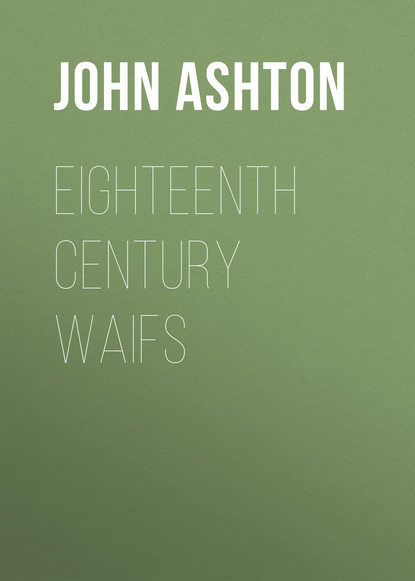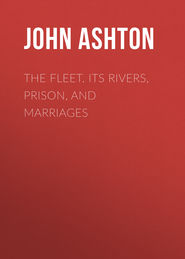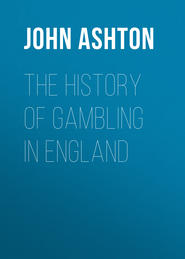По всем вопросам обращайтесь на: info@litportal.ru
(©) 2003-2024.
✖
Eighteenth Century Waifs
Настройки чтения
Размер шрифта
Высота строк
Поля
Entendres.
13
Wonders.
14
These leaden combs were used for darkening the hair.
15
Pulled down 1885.
16
Forsitan et nostros ducat de marmore vultus Nectens aut Paphia myrti aut Parnasside lauri Fronde comas – At ego secura pace quiescam. Milton in Manso.
17
John Speed, the historian, died 1629, and was buried in the church of St. Giles’, Cripplegate.
18
The few hairs of a lighter colour, are supposed to have been such as had grown on the sides of the cheeks after the corpse had been interred.
19
‘MDCLV. May vi, died my (now) only and eldest son, John Smith (Proh Dolor, beloved of all men!) at Mitcham in Surrey. Buried May ix in St. Giles, Cripplegate.’
20
Edward Philips or Phillips, in his life of Milton, attached to ‘Letters of State, written by Mr. John Milton,’ &c., London, 1694, (p. 43), says: ‘He is said to have dyed worth £1,500 in Money (a considerable Estate, all things considered), besides Household Goods; for he sustained such losses as might well have broke any person less frugal and temperate than himself; no less than £2,000 which he had put for Security and Improvement into the Excise Office, but, neglecting to recal it in time, could never after get it out, with all the Power and Interest he had in the Great ones of those Times; besides another great Sum by mismanagement and for want of good advice.’
21
Thomas Newton, Bishop of Bristol, thus writes in his life of Milton, prefixed to his edition of ‘Paradise Lost,’ London, 1749: ‘His body was decently interred near that of his father (who had died very aged about the year 1647) in the chancel of the church of St. Giles, Cripplegate; and all his great and learned friends in London, not without a friendly concourse of the common people, paid their last respects in attending it to the grave. Mr. Fenton, in his short but elegant account of the life of Milton, speaking of our author’s having no monument, says that “he desired a friend to inquire at St. Giles’s Church, where the sexton showed him a small monument, which he said was supposed to be Milton’s; but the inscription had never been legible since he was employed in that office, which he has possessed about forty years. This sure could never have happened in so short a space of time, unless the epitaph had been industriously erased; and that supposition, says Mr. Fenton, carries with it so much inhumanity that I think we ought to believe it was not erected to his memory.” It is evident that it was not erected to his memory, and that the sexton was mistaken. For Mr. Toland, in his account of the life of Milton, says that he was buried in the chancel of St. Giles’s Church, “where the piety of his admirers will shortly erect a monument becoming his worth, and the encouragement of letters in King William’s reign.” This plainly implies that no monument was erected to him at that time, and this was written in 1698, and Mr. Fenton’s account was first published, I think, in 1725; so that not above twenty-seven years intervened from the one account to the other; and consequently the sexton, who it is said was possessed of his office about forty years, must have been mistaken, and the monument must have been designed for some other person, and not for Milton.’
22
Between the creditable trades of pawnbroker and dram-seller there is a strict alliance. As Hogarth observes, the money lent by Mr. Gripe is immediately conveyed to the shop of Mr. Killman, who, in return for the produce of rags, distributes poison under the specious name of cordials. See Hogarth’s celebrated print called Gin Lane.
23
Probably in the month of September, as the entry of his baptism in the registry of the chapelry of Middlesmoor, in Netherdale, says ‘Eugenius Aram, son of Peter Aram, baptized the 2nd of October.’
24
Though no warrants were issued against them, Aram was arrested for debt, in order to keep him; yet he immediately discharged this debt – not only so, he paid off a mortgage on his property at Bondgate. Suspicious facts, considering he was, notably, a poor man.
25
Finding.
26
The esne was a man of the servile class, a poor mercenary, serving for hire, or for his land, but was not of so low a rank as the other classes.
27
An Act relative to German and Swiss redemptioners.
28
Bedlam was then in Moorfields.
29
A large wickerwork receptacle behind the mail-coach.
30
Palmer invented the mail-coach, and supplied horses to the Post-Office.
31
Lunardi made the first balloon ascent in England, Sept. 21, 1784.
32
Birmingham halfpence, struck by Boulton and Watts at their works at Soho, Birmingham.
33
Kew Bridge was opened to the public, September, 1789.
34
Some idea of the duelling that went on in Ireland in the latter part of last century may be gathered from the following extract from Sir Jonah’s book (vol. ii, p. 3): ‘I think I may challenge any country in Europe to show such an assemblage of gallant judicial and official antagonists at fire and sword as is exhibited even in the following list:
The Lord Chancellor of Ireland, Earl Clare, fought the Master of the Rolls, Curran.
The Chief Justice, K.B. Lord Clonmell, fought Lord Tyrawley (a privy counsellor), Lord Llandaff, and two others.
The judge of the county of Dublin, Egan, fought the Master of the Rolls, Roger Barrett, and three others.
The Chancellor of the Exchequer, the Right Hon. Isaac Corry, fought the Right Hon. Henry Grattan (a privy counsellor), and another.
A Baron of the Exchequer, Baron Medge, fought his brother-in-law and two others.











